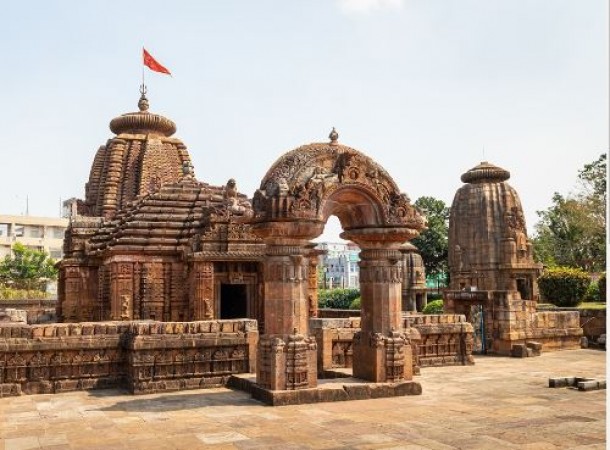
Mukteshwara Temple is 10th century Hindu temple dedicated to lord Shiva located in Bhubaneswar, Odisha. With its intricate carvings, exquisite sculptures, and unique architectural style, the temple serves as a testament to the rich artistic and spiritual legacy of the region. Built around the 10th century CE, the Mukteshwara Temple holds an exceptional place in the history of Indian architecture, reflecting the profound fusion of religion, art, and craftsmanship.
The Mukteshwara Temple, located in the capital city of Bhubaneswar, belongs to the Kalinga style of architecture that flourished during the reign of the Eastern Ganga dynasty. This dynasty ruled over the region from the 10th to the 15th century CE, fostering a vibrant cultural milieu that saw the creation of numerous architectural marvels, including temples and monuments. The Mukteshwara Temple stands as a remarkable example of this era's artistic prowess.
Also Read: ISKCON Temple, Bangalore: A Divine Haven of Spirituality
The Mukteshwara Temple's architecture is a stunning synthesis of various architectural elements, blending indigenous Odishan styles with influences from the broader Indian architectural traditions. The temple is dedicated to Lord Shiva, and its unique architectural features set it apart as an iconic masterpiece.
The temple is divided into two main sections – the deul (sanctum) and the jagamohana (assembly hall). The deul is the sanctum sanctorum housing the main deity, Lord Mukteshwara (a form of Lord Shiva), and is characterized by its curvilinear tower (rekha deul). The jagamohana, though smaller, is no less spectacular. Its pyramidal roof and intricately carved pillars draw the eye and exude a sense of grandeur.
The Kalinga architectural style is marked by its emphasis on richly adorned sculptures and ornate carvings. The Mukteshwara Temple is a showcase of these artistic flourishes, featuring an abundance of intricately carved friezes, sculptures, and motifs that adorn the temple's exterior walls.
Also Read: Hinglaj Mata Mandir: Symbol of Religious Harmony in Pakistan
The temple's exterior is adorned with a plethora of sculptures depicting various deities, celestial beings, and mythological scenes. Each sculpture is a testament to the exceptional craftsmanship of the artists who painstakingly chiseled these intricate designs into the temple's walls. These sculptures provide insight into the religious beliefs, cultural narratives, and artistic techniques of the time.
The carvings on the temple's walls are not mere decorations; they convey deep symbolic meanings. The depiction of various deities, including Lord Shiva, Lord Ganesha, and various forms of Devi, reflects the temple's spiritual significance. The intricate motifs also depict scenes from the epics, like the Mahabharata and Ramayana, further connecting the temple to the broader cultural context of ancient India.
Also Read: Ancient Wonders: Explore the Oldest Temples on Earth
Despite its remarkable endurance, the Mukteshwara Temple, like many ancient structures, bore the brunt of time and weather. Over the centuries, natural elements and neglect caused deterioration to the temple's intricate carvings and architectural elements. Fortunately, concerted efforts by conservationists and authorities have led to meticulous restoration work, aimed at preserving the temple's exquisite beauty for future generations.
The Mukteshwara Temple has garnered international recognition not only for its architectural grandeur but also for its historical and cultural significance. The temple draws visitors, scholars, and art enthusiasts from across the globe, providing them with a glimpse into the artistic and spiritual heritage of Odisha. Its inclusion in UNESCO's World Heritage list further underscores its importance in the realm of global cultural heritage.
Also Read: Udupi Sri Krishna Matha: A Journey through Time and Spirituality
Mukteshwara Temple stands as a true gem of Odisha's architectural treasure. Its intricate carvings, exquisite sculptures, and unique architectural style not only showcase the mastery of ancient artisans but also provide a gateway to understanding the cultural, religious, and artistic nuances of a bygone era. As the Mukteshwara Temple continues to stand tall, it beckons travelers and devotees alike to delve into its timeless beauty and unravel the stories etched in stone.
Also Read: Multan Sun Temple: A Forgotten Marvel of Ancient Pakistan
From Shivling to Snake, Exploring Mystical Dreams of Bholenath